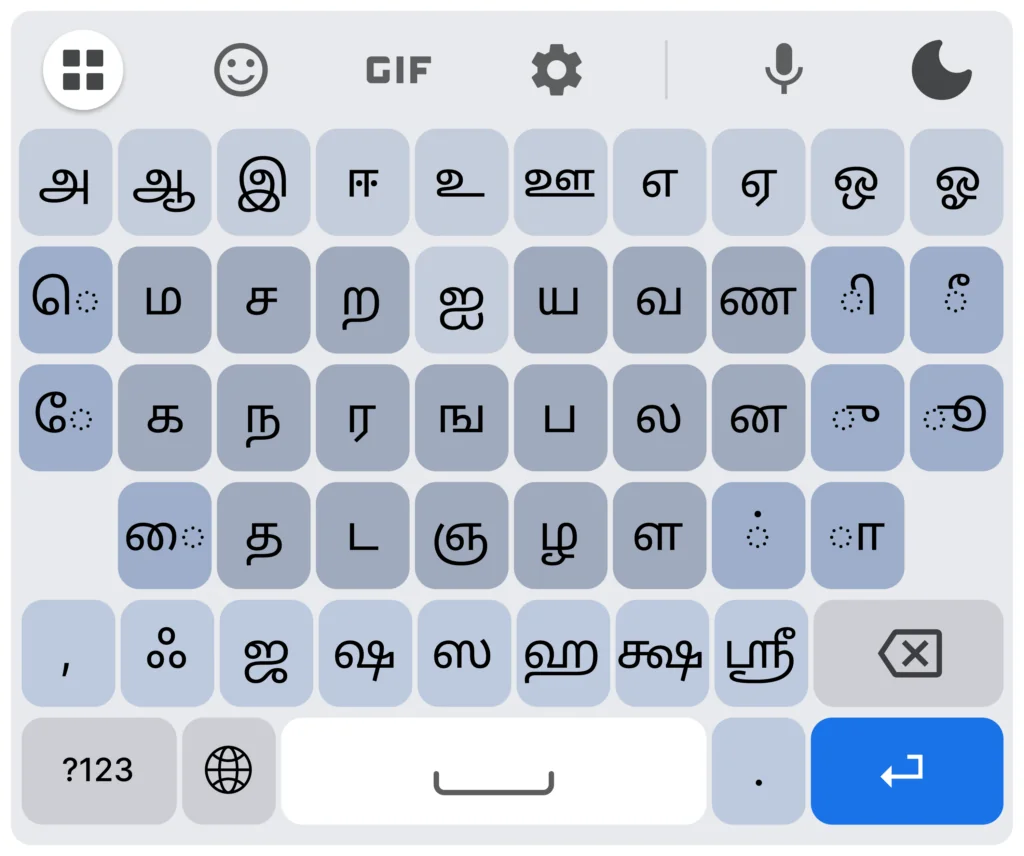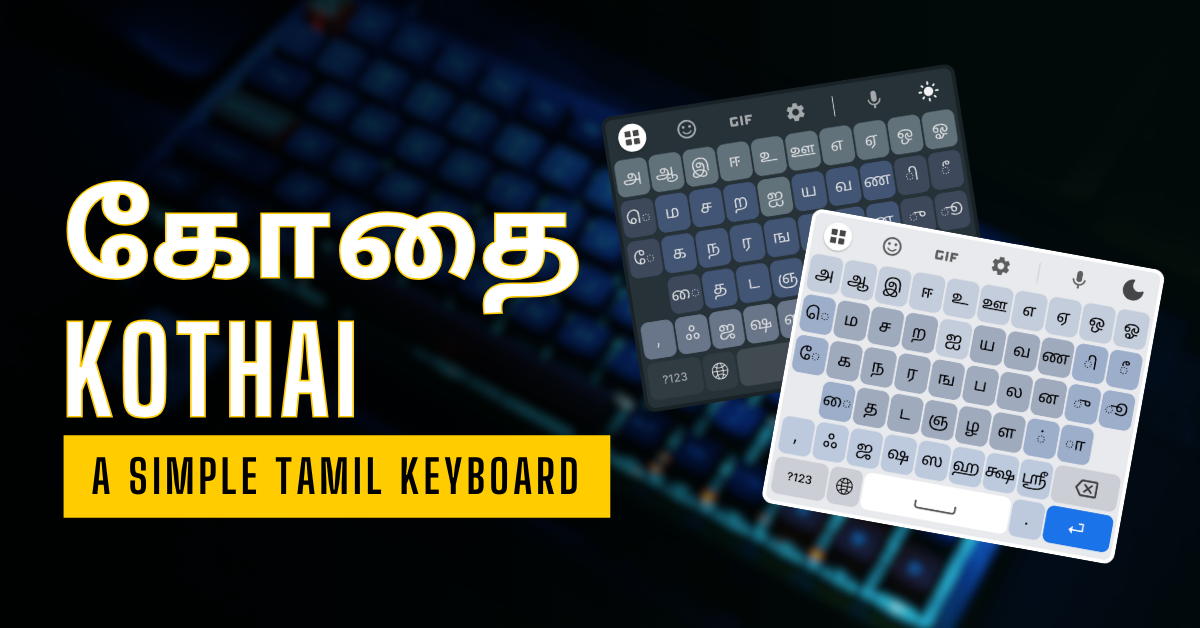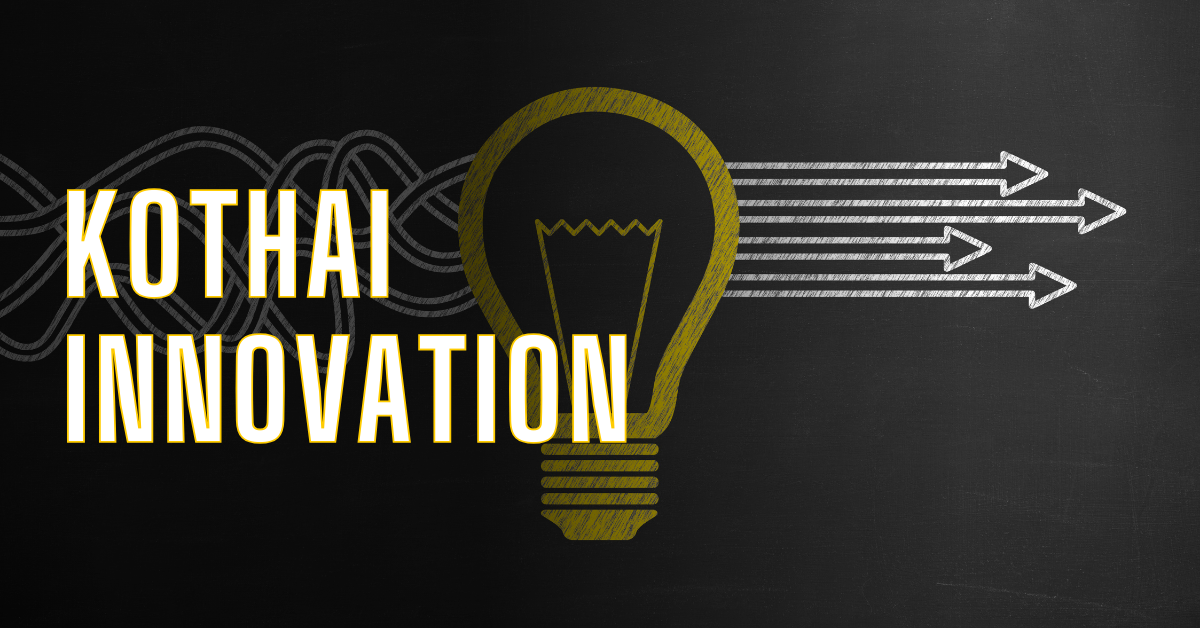A Simple Tamil Keyboard – Kothai
The printing press was invented by the German Inventor Johannes Gutenberg in the year 1440. This is an invention that changed the world. It became easier for people to spread knowledge. Lots of books were printed in many different languages.
Between 1556 and 1800, 40% of the books that were printed in South Asia were in Tamil. After English, most books were printed in Tamil. Tamil kept pace with technology. Based on this (source: Roja Muthiah Library – The South Asia and Burma Retrospective Bibliography -SABREB), one could also understand the prosperity of Tamil and its people during this period of time. Just for some context, Tamil is one of the oldest languages in the world and we are very proud of its rich heritage.
So, it hurts me when I see people use the English alphabet to write Tamil sentences.
Subramania Bharati’s prediction:
In one of his poems, Subramania Bharati, a great Tamil Poet (1882 – 1921) wrote ‘தமிழ் இனி மெல்ல சாகும்’ (Tamil will have its slow death). More than a prediction, this was his concern for the language. Tamil has been seeing its share of decline in the last 100 years. In the last 50 years this pace has accelerated. Sadly, we have not done enough. You reap what you sow. Today, you see a lot of adults, kids, and elders prefer to use English to type native Tamil sentences. Tamil is also typed in English with at-least half (I would think) the Tamil speaking population not knowing how to read and write Tamil.
AI & Tamil:
With the advent of AI, we have an opportunity to make amends to our past failures. As Andy Grove calls it, we are at a strategic inflection point. If we do not fix the problem now, it will keep getting worse and it will make it very difficult to reverse the trend (look what’s happening to Intel, for example). We have a unique opportunity to embrace technology and make sure the language and the population who speak the language are rich and prosperous.
One of the first problems that need to be solved is how to make people use Tamil in Tamil. We need to make Tamil easier to use on devices. We need a simple input method of typing tamil alphabets.
Kothai – A Simple Tamil Keyboard:
Last week, Srija Santhanam launched our new simple Tamil Keyboard Kothai. In her LinkedIn post, she clearly outlines the current problem and how Kothai helps solve it. This is an initiative of DCKAP Palli and we have been chipping at this problem for over 3 years. This is not just an initiative by one person or one company.
It is nice that many people have been researching this problem including people like Elango Cheran (Google), Baskaran Sankaran (Maadhyamik Technologies) and more. Our Kothai app is now live. You can download the Kothai app on your android devices now. We are also working on an iOS version.
As Srija outlines in her post, this is not just an issue unique to Tamil. It is a common challenge for many (if not all) Indian Languages including Hindi, Malayalam, Kannada, Telugu, Marathi, Gujarati and more. Transliteration (in this case, typing in English letters) has become the default way we communicate digitally.
Tamil is important not just within India. The language is spoken by communities in countries like Sri Lanka, Singapore, Malaysia, Myanmar, and we have Tamil speaking communities across the world. It is important that the Tamil communities across the world and in Tamil Nadu learn to read and write the language and also use it digitally.
How does the Kothai Tamil keyboard solve this problem?
Kothai introduces a handwriting-style Tamil typing method which mirrors the Tamil handwriting style.

This will also help you read and write Tamil better and help with your Tamil learning. It also simplifies Tamil typing by reducing the number of key selections. Instead of choosing from dynamically changing characters (e.g., selecting “க” and then modifying it to get “கோ”), Kothai allows users to type in sequence, just like writing on paper. For example, to type “கோ” on most keyboards, users have to select “க” and choose variations like “கா, கி, கீ, கு, கூ, etc.” In Kothai, users type sequentially: “ே” + “க” + “ா” – mimicking the natural handwriting process.

This is just one of the many initiatives we are working on. One thing we would like to do is to make it profitable to invest in Tamil. When there is money to be made, more people will start to read, write and learn the language.
I am bullish on Tamil.
தமிழ் வளரும் (Tamil will flourish).
Thank you for reading.
Karthik Chidambaram.


Leave a Reply